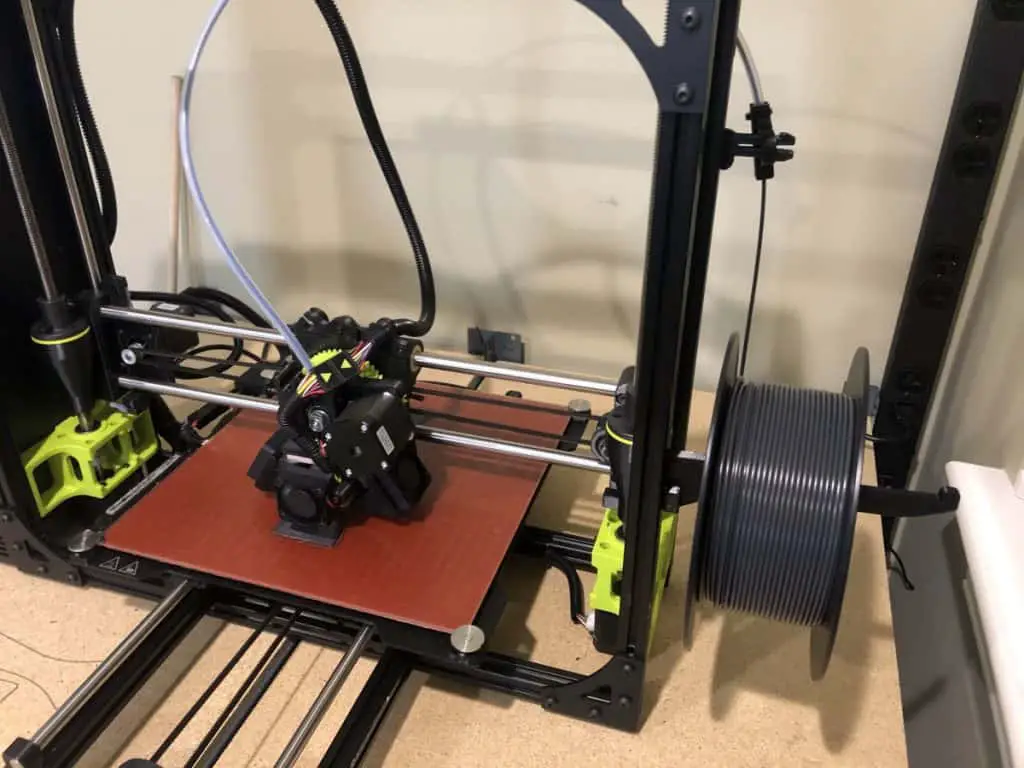
One of the common questions many new 3d printer hobbyists have is, do I need to remove and store my filament after I finish printing an object. I had the same question when I first got into the hobby a couple of years ago and have been asked it many times since, so I figure I would write a response up and publish it for you guys.
If you are using standard filaments, live in a relatively low humidity environment, and plan on printing something again within a couple of days, you can leave the filament on the printer. If you live in a high humidity environment and don’t plan on printing anything for a couple of days, I would recommend you store your filament using one of the options below.
If you are using a specialty filament like Nylon, I would store it when it’s not being used.
Now let’s talk about why these are my recommendations.
Why Store Filament
Most of the commonly used filaments this hobby are hygroscopic, meaning they absorb moisture from the air. The extra moisture in the filament can cause the thickness to be inconsistent, affecting the quality of your printed object. In some cases, the filament can expand enough to jam the print head causing failed prints, wasted time, and wasted filament.
Potential Problems Include
- Weakened Filament
- Jammed Printer Heads
- Low-Quality Prints
- Reduced Lifespan
To prevent this from happening, you will want to store your filament in something airtight (examples later in this article) and use a desiccant, like silica gel or a mini dehumidifier, to control the humidity. The process is not complicated and could potentially save you many hours of troubleshooting, not to mention less wasted filament.
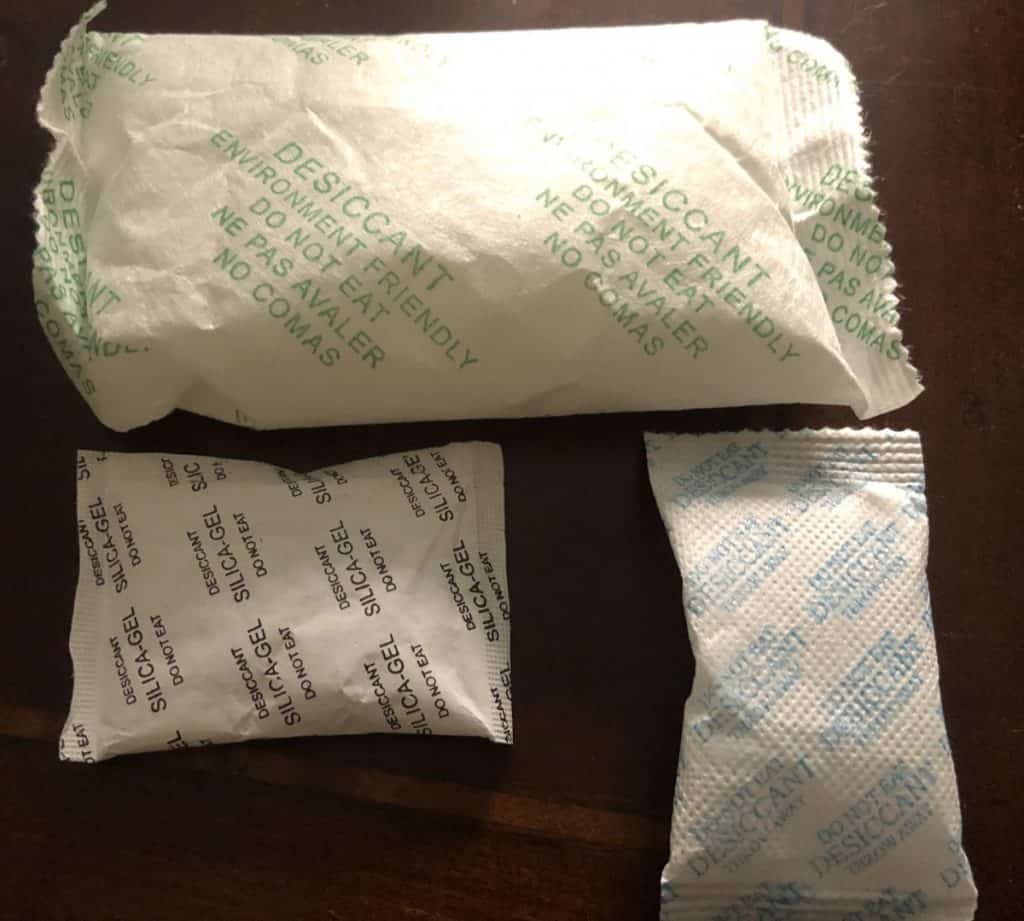
When to Store Filament
There are no hard and fast rules here, but I will provide some general guidelines that I follow. Like I mentioned above, you don’t have to store your filament after every print unless you live in a high humidity area, are using a specialty filament, or don’t plan on using printing anything in the next couple days.
Here are the general guidelines I follow. If your answer to any of the questions below is no, then I recommend you don’t leave your filament on your printer.
- Do you plan on printing anything in the next 2-3 days?
- Are you using standard PLA or ABS filament?
- Is the humidity by your printer controlled? (Could be with a standalone or whole-house dehumidifier)
- If the filament is not new, has it been stored in a low humidity container/bag?
*Note: As I mentioned, these are just guidelines I follow. All filament is not made equally, and results will vary based on manufacture, filament type, and local environment variables. You will need to make a judgment call on if you want to leave your filament on your printer or not.
Filament Storage Options
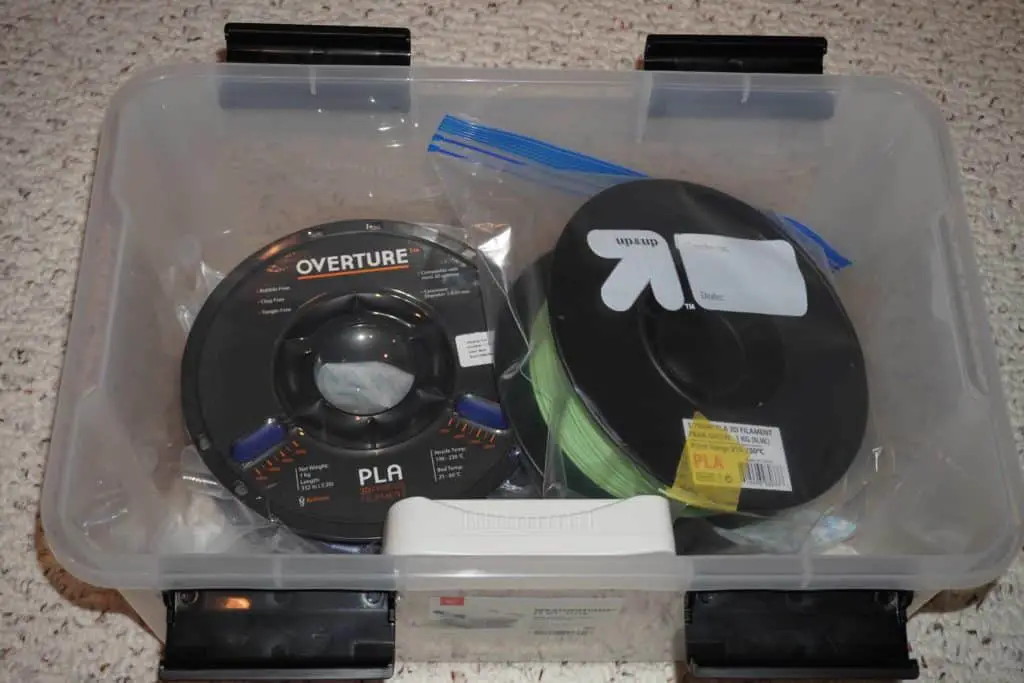
Now that we have talked about why and when to store your filament let’s talk about how. I’m going to go over some of the standard options available in this article, but I cover it in more depth in my “3D Printer Filament Storage Options” article. So be sure to check it out.
Filament Storage Bag
There are several types of bags available on Amazon specifically designed to store and carry a single filament spool. Some of the nicer ones have pockets to hold silica gel packs built into them. If you go this route, you will want to make sure to get one that is completely airtight. You can buy some of them in larger quantities to save a little coin. Here is my favorite filament storage bag currently available on Amazon.
Another great option is Ziplock bags. They may not be explicitly made for filament, but one-gallon bags like these work great and are cheap. You will just want to make sure you are using a desiccant, like silica gel, to absorb the moisture in the storage option of your choice.
Filament Storage Box
Filament storage boxes are great to store one or two spools that you are currently printing with. If you go this route, you won’t need to worry about removing them from the printer because the storage box will control the humidity. I have a Polymkaer Polybox which can store two 1kg or one 3kg spool of filament and provides you a digital readout of the current humidity level in the box.
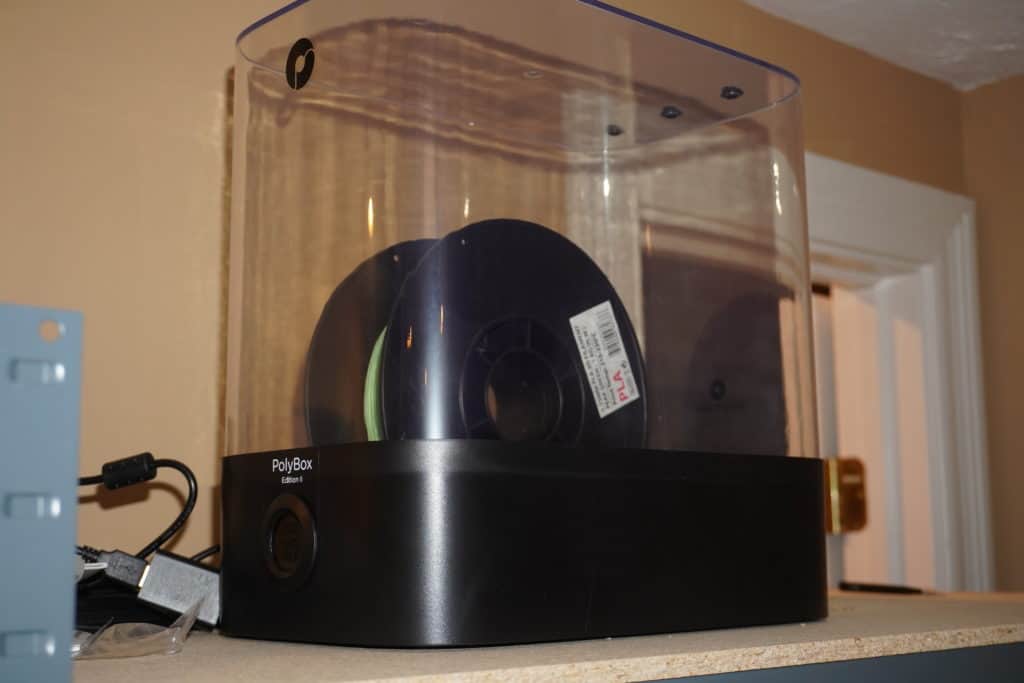
Watertight Containers
Larger watertight containers, like this one I purchased on Amazon, are great for storing 3-5 spools of filament. You will need a mini dehumidifier to control the humidity in the larger area. Don’t worry though the dehumidifiers are not expensive. If you go this route, I would use ziplock bags as well.
Vacuum Bags
Vacuum bags are an excellent option for long term storage of partially used filament spools. Just put one or more spools in the bag with some silica gel and vacuum all the air out. I would not recommend using them as an everyday storage option because of the amount of time it takes to set everything up. These are the vacuum bags I recommend, they are relatively cheap and come with the hand pump.
Moisture Control Options
Regardless of the storage option you choose, you will need to use a desiccant of some sort to control the humidity. Here are the two options.
Silica Gel
Silica gel is the most common, and cheapest option, to absorb the moisture in the storage option you are using. You can get them in premade bags or larger quantity tubs like this. You can also get small quantities for free in things you buy. I never paid attention to this before I got into this hobby, but I was surprised how many products ships with a small bag of silica gel.
If you decide to go with the tub option, you will need to have some sort of container or a large bag for them. Keep in mind that silica gel can only absorb so much moisture, so you will need to keep buying it, or purchase something rechargeable.
Mini Dehumidifier
Most of the mini dehumidifiers that don’t use power have rechargeable silica gel in them. They tend to have a small footprint and are an excellent option for larger containers and some filament storage boxes. These are a great option because they are cheap and can be recharged in 8-10 hours. I have purchased this one multiple times in the past and have had great success with all of them.
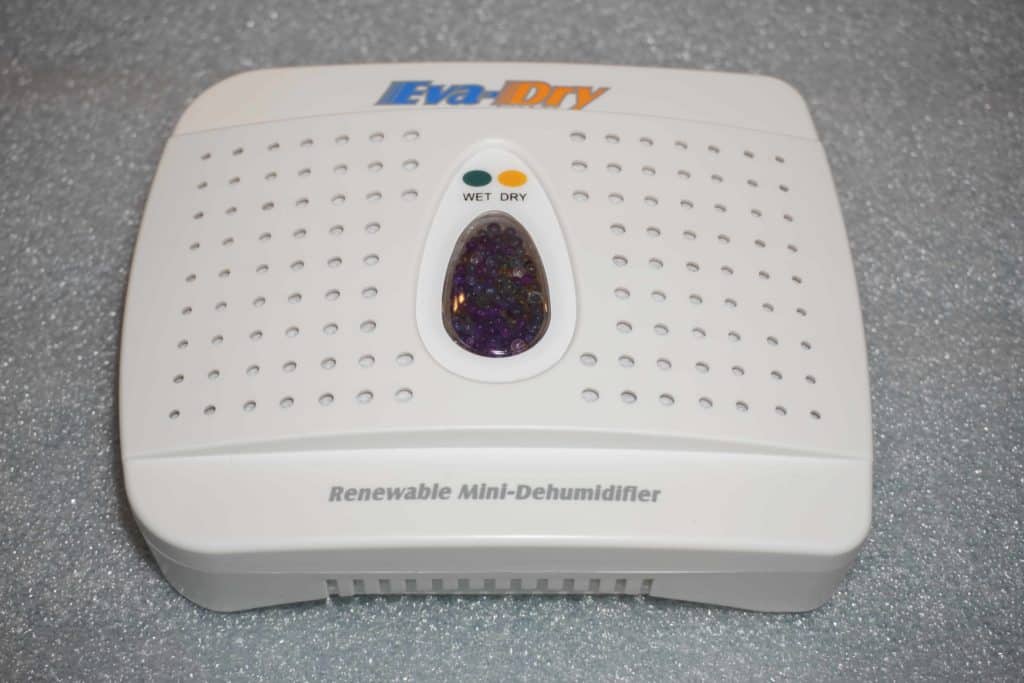
Recap
In this article, we covered why its ok to leave your filament on the printer in some circumstances. Plus, we talked about why you need to store filament, how to store it, and a couple of options to help control humidity. As a reminder, if you are using standard PLA or ABS filament, live in a relatively low humidity environment, and plan on printing something again in the next couple days, you can leave the filament on the printer.
Make sure you check out our YouTube channel, and if you would like any additional details or have any questions, please leave a comment below. If you liked this article and want to read others click here.
